Kites – When I was a kid, I always wanted to be a pilot. Well, the reason was simple and clear in my mind. I simply wanted to take my own airplane and catch as many as kites I wanted to.
With limited resources and pocket money during childhood, one of my adventures was to make my own kite using a very simple a newspaper, some broom sticks and boiled rice. Well, the result was amazing. It looked just as any other kite, but it would never fly, never even in the heavy wind. Why??? Why wouldn’t my Kite fly?
I came to know the reason recently, when I visited these kite making factories where a few hard workers were making kites from 8:00 am to 8:00 pm, only to meet supply & demands for Uttarayan or Widely known as Makar Sankranti.
Uttarayan / Makar Sankranti
We in India celebrate Kite festival on 14th January which is also known as Makar Sankranti which is celebrated with colors of joy and life. Personally, I call it a festival of paper and color.
Makar Sankranti – marks the end of the long winter months with the return of the sun to the Northern Hemisphere and according to the Hindu astronomy, the sun enters the zodiac of Makara (Capricorn). Hence, it is called Makar Sankranti or also known as Uttarayan.
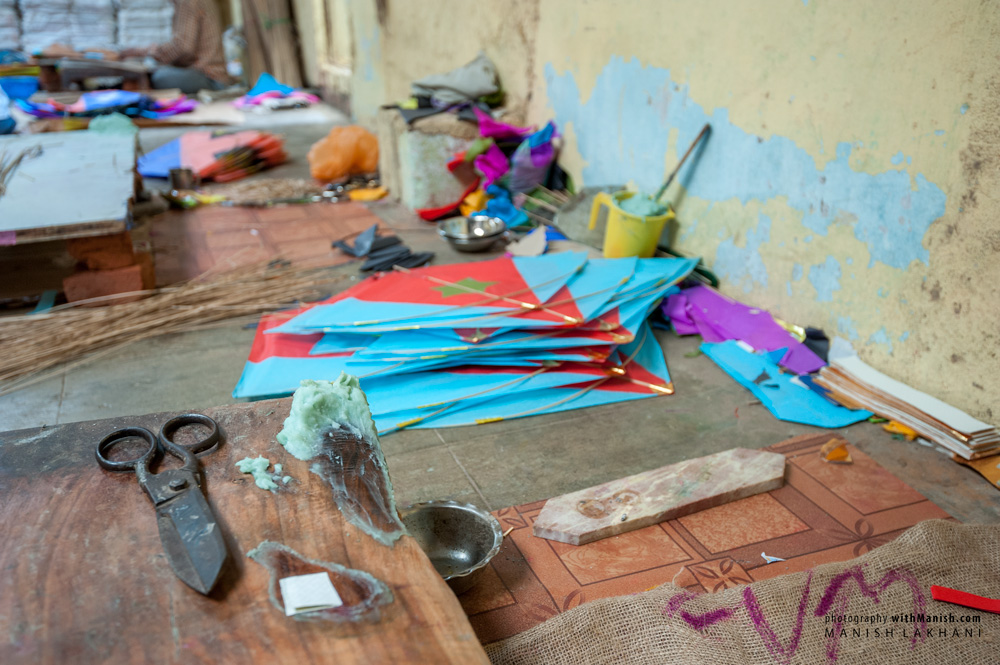
In the Month of January, the cold starts disappearing and the serene blue sky gets magically filled with colorful kites. And you can see this scene right from early morning to late evening, where the entire sky remains colorfully dotted with vivid splashes of colorful kites of varying hues, shapes and sizes. The excitement continues at late evenings and nights too. As the sun sets and darkness hovers over, people continue to compete each other for supremacy in the sky. Once the time to fly kite is over, the paper lanterns take place making the sky look like a black canvas filled with beautiful lanterns and fire works.
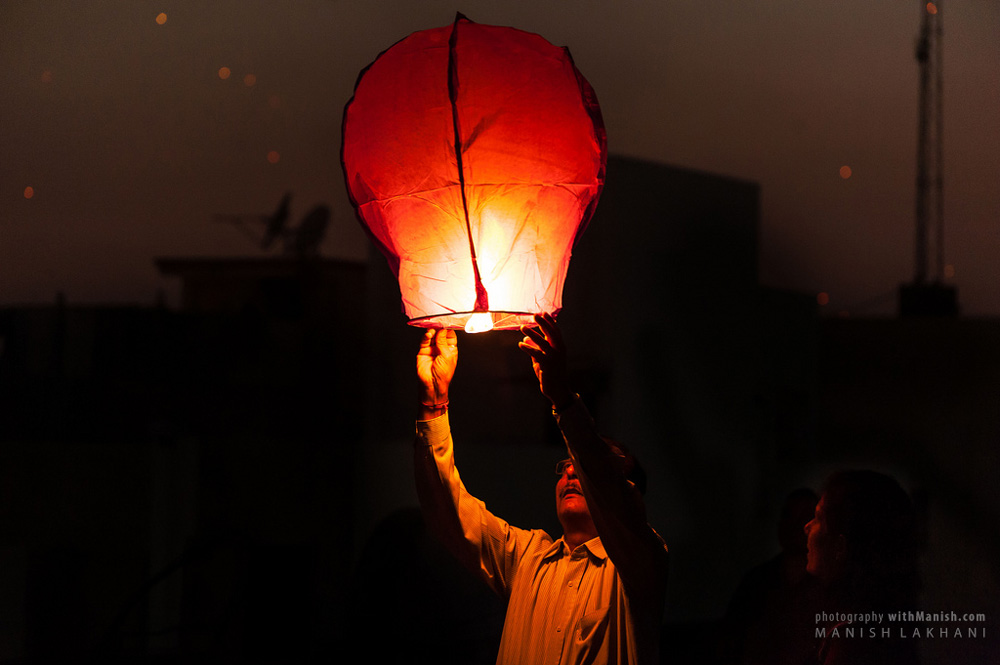
These lanterns known as tukkal, sway at the mild stroke of wind presenting a lovely image in the dark sky. With the new modern touch, the young crowd also tries to blow paper balloons adding more enchanting beauty to the sky.
Kites – The History
Kites, have a long history and were invented in China. There are evidences that kites where flown in AD 549 and it was used mainly for rescue missions. From China, kite was first introduced to Cambodia, India, Japan, Korea and later to the western world.
After its introduction into India kites were further evolved into fighter kites, also known as the patang in India and are flown every year on festivals such as Makar Sankranti.
Generally, the kite festival is celebrated for 2 days in India, 14th January (the main day), followed by on the 15th (called as Vasi Uttarayan). But, the process of making Kites is not a day’s work. Kite making continues for an entire year.
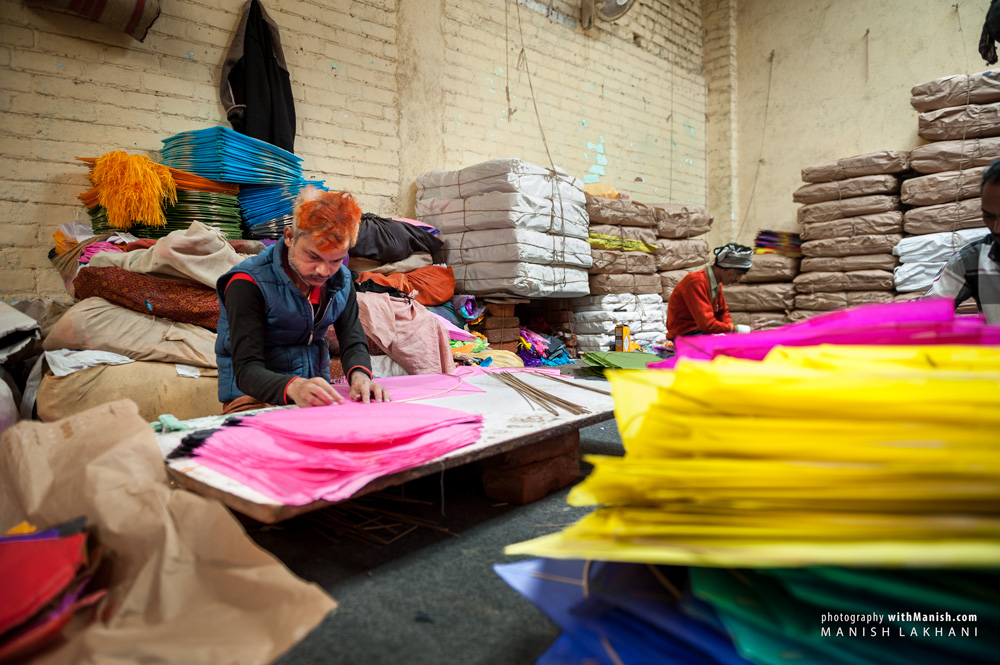
Raw materials are purchased from different states of India to make the best kites. Bamboo & Paper come from Assam and West Bengal, and local gum is made from weetflower. Jaipur and UP are known for craftsmanship of kites. This is the reason why people from these states travel across to the different states of India to help produce kites.

The Kite Thread from UP is famous. Experts from the small villages of UP, travel to different places across the country and paint the thread, making it sharp for the kite flying day.
Kite thread is known as door or manja. Manja (or manjha) is the abrasive string used for fighter kites, mostly used in Afghanistan, Bangladesh, Chile, India, Nepal and Pakistan. It is gummed, colored and coated with powdered glass. In Brazil, the mix of glue and powered glass is called “cerol”.
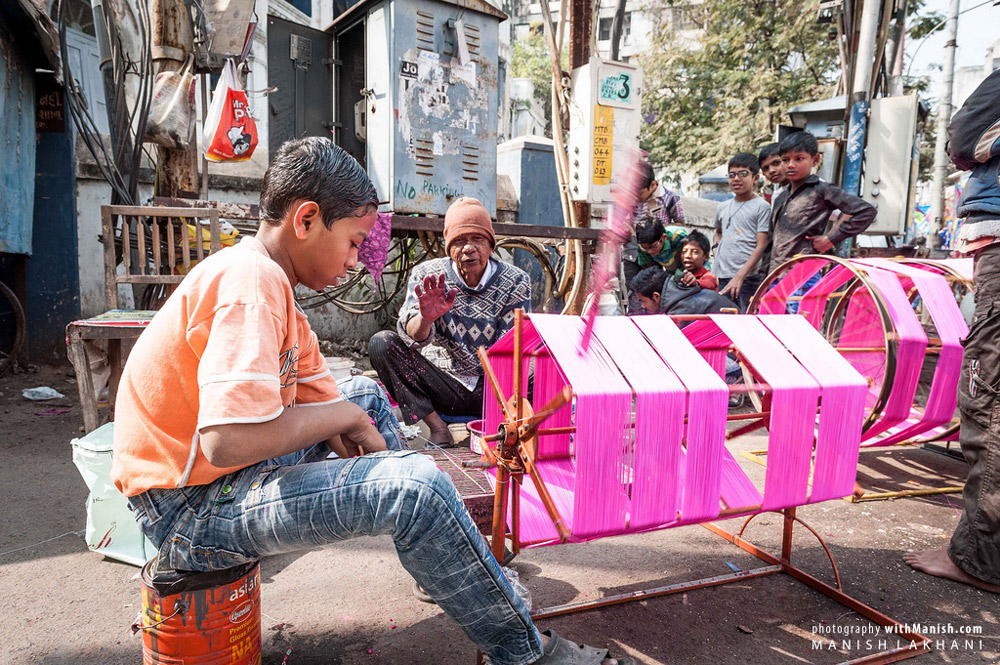
Kite fighting game is easy and played in very simple way. In India, on the 14th of Jan, people fly their kites and get the strings or manjha entangled with other kites flying in the sky and try cutting off the strings of each others kites by pulling it. The winner’s kite keeps continue to fly high.
Sometime back, I got an opportunity to experience the kite making process. And believe me I was amused by it. Here are the pictures of this beautiful festival and the kite making process.








































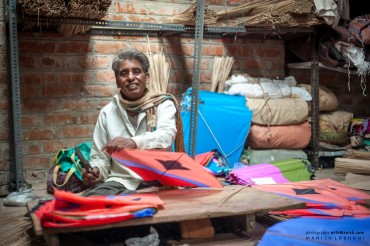
















Comments